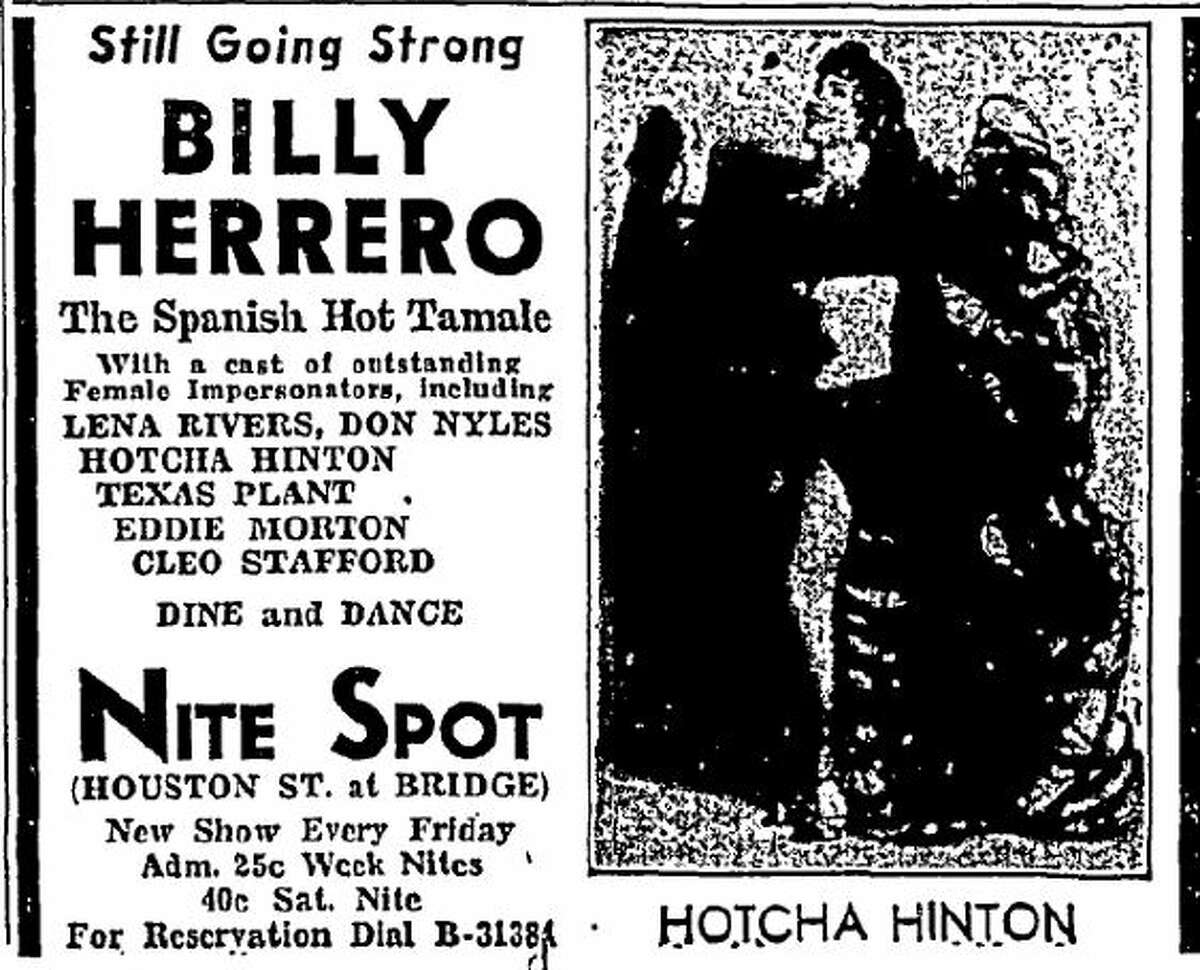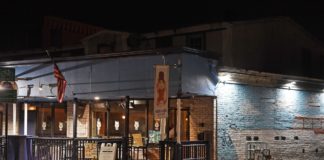Drag artists and performances have been under attack by far-right groups in recent years. Promising to protect children, opponents have falsely cast drag queens as pedophiles and groomers.
The inflammatory anti-drag campaign has manifested in demonstrations and violent threats against drag events and performers across the country. On Sunday, The Starlighter venue in San Antonio canceled performances for the rest of the year, citing the safety of its performers after recent online threats.
The history of San Antonio’s drag scene is more than a century old. Drag shows sold out theaters and pulled in families and straight crowds long before “RuPaul’s Drag Race” brought the art form into the mainstream, and longer still before Republican lawmakers in Texas and elsewhere began promising to ban children from brunches, readings at libraries and other events.
In case you missed it: The Starlighter cancels drag shows through the year citing threats
“Gender transgression as entertainment was popular with local audiences,” said Melissa Gohlke, an assistant archivist at the University of Texas at San Antonio’s special collections and scholar of LGBTQ history. “They packed into theaters to see these performers, and that included families. It was not considered fringe behavior but simply a form of entertainment.”
As early as 1906, drag performers sashayed onto San Antonio’s stages in wigs and dresses at Electric Park, an amusement destination across the street from San Pedro Springs. That August, the San Antonio Gazette wrote a glowing story about Gilbert Sarony, calling him “one of the greatest female impersonators” on the American stage.
Early drag queens like Billy Herrero, who went by the stage name the Spanish Hot Tamale, and Hotcha Hinton helped bohemian gay culture thrive here in the 1920s and ’30s, when the prohibition of alcohol drew crowds to the clubs where these artists performed.
Much of San Antonio’s drag scene would be forgotten were it not for Gohlke, who has stitched together the Alamo City’s queer history, most of which has been obscured from the historic record.
Criticism of drag performances and the LGBTQ community “comes in cycles, and it is disturbing given all the gains that the LGBTQ population has had over the decades,” Gohlke said. “For me, the most concerning is the backlash against our trans brothers and sisters and the daily hurdles that they face.”

A 1937 advertisement in the San Antonio Light showcases a Billy Herrero performance in San Antonio. Herrerro went by the stage name The Spanish Hot Tamale.
San Antonio Light archives
During World War II, when San Antonio’s population doubled from the decade before, the U.S. military began cracking down on “deviant behavior” among its soldiers stationed here and created a list of banned establishments. There is also a record of military police conducting raids.
Drag shows were driven underground, and queer and drag clubs moved out of San Antonio’s theater district on Houston Street to locations outside of the city like on the East Side, Von Ormy and Helotes.
On Express-News.com: Texas drag queens fear for their safety over right-wing attacks. But that won’t keep them off stage.
“I was surprised when I started finding things,” Gohlke said. “I don’t know why I was so surprised but just the creativity that was out there to express who you are and to find places to do it in. That, to me, is amazing. It speaks to the creativity and the tenacity of folks who often live on the margins and are not content to stay there.”
‘Front pages of the paper’
In the early days, drag performances consisted of comedy routines. Others played up their ability to fool people into believing that they were women, Gohlke said.
Most of the performers were adamant that they were heterosexual, she said, possibly as a result of the social restrictions against homosexuality.
However, there were exceptions.
When well-known drag performer Zelldo Bunker vanished from San Antonio in 1909, he was last seen in his shirt sleeves brandishing a pistol, according to a front page story in the San Antonio Light.

These were the members of Gene Dana’s Company of female impersonators. They were recruited from colleges. Left to right, they were: Eddie Morton, Billy Rhomer, Nickey Nash, George Kaye, Gene Dana, Bobby Bell and Don Rand. This photo ran in the San Antonio Evening News in 1935.
San Antonio Evening News archives

On the left is Nannette Carman. On the right is Billy Herrero, who went by the stage name the Spanish Hot Tamale. The pair were featured in a 1937 story in the Seattle Post-Intelligencer.
Hearst newspaper archives
Friends later discovered a letter under his mattress in his room on Durango Street in the San Antonio’s red light district that spoke of heartbreak. A boy he was in love with had left him. His goodbye letter was published in the San Antonio Light.
“Here you have a very famous female impersonator who is open in his letters about his homosexuality, and it makes the front pages of the paper,” Gohlke said.
Bunker was found in Missouri with his sister. He eventually ends up in a sanitarium for his mental health, according to subsequent Light stories.
“That little vignette just signals an untold story in the city’s history; that who would have thought the city would be so captivated by the disappearance of a female impersonator,” Gohlke said.
‘Simply didn’t tell people she was a man’
Most queens wore men’s clothing when they weren’t performing and insisted they were men, often placing Mr. in front of their name in billings, Gohlke said. Hinton, who traveled the country as part of the Jewel Box Revue and Boys Will Be Girls troupes, was the exception.
“Hotcha was so determined to be seen and perceived as a woman that she simply did not tell people she was a man,” Gohlke said. “She dressed full time in women’s clothes, and as far as she was concerned, she was a woman.”
Inspired by the large crowds drawn by female impersonators, San Antonio’s socialites put on their own performances to raise money. One such fundraiser was a womanless wedding on April 18, which featured some of the city’s most prominent officials, including famed architect Atlee B. Ayres, who played the brushing bride.

Inspired by the large crowds drawn by female impersonators, San Antonio’s socialites put on their own performances to raise money. One such fundraiser was a womanless wedding on April 18, which featured some of the city’s most prominent officials, including famed architect Atlee B. Ayres, who played the brushing bride.
Courtesy of Melissa Gohlke
Despite their popularity, drag shows were targeted by the police and other opponents. Gender transgression was forbidden outside of the clubs, and there were consequences for those who crossed the line.
In 1935, drag performers performing at the Royale Dinner Club were arrested on “morals violations” and “indecent exposure” after they left the club in drag when a customer at a hotel next door filed a complaint.

An advertisement for The Royale Dinner Club placed in the San Antonio Express in 1935.
San Antonio Express archives
Georgie Kaye and his seven College Boys spent several hours in jail, where they performed for inmates. Their arrests prompted police to raid the Royale Dinner Club. Unable to find a crime with which to detain and charge them, the local prosecutor released the performers and they agreed to leave the city.
Up until the 1980s, San Antonio Police continued to harass people dressed outside their assigned sex at birth.
“You could be hauled into jail and had to produce three items of female clothing,” Gohlke said. “If you couldn’t do that, you would get locked up. It was the same for men dressed in drag.”
‘The bigger the hair, the closer to Jesus’
Drag continued to draw crowds at late-night revues and clubs in the 1950s and 1960s at venues like the Life Savers Grill. Performers, however, could still be arrested around this time if they left the club in drag.
There was Paul’s Grove in Helotes and the Ponderosa in Von Ormy, which operated out of repurposed army barracks.

Jimmy James as Marilyn Monroe, performing at the Broadway Cabaret, 1982.
Courtesy of Melissa Gohlke
The Ponderosa in Von Ormy was described recently in OutinSA Magazine as “a place where raw talent went to bloom. They created stunning outfits with headdresses, sequins, feathers, ruffles, and wigs. They pushed fashion to its limits and made no apologies. It was very liberating and very innocent. They were unaffected by the outside world, lost in the moment.”
John McBurney, a retired professional freelance makeup artist who worked with Selena, Jennifer Lopez and other stars told OutinSA magazine in 2015 of his time at the Ponderosa: “The bigger the hair, the closer to Jesus, we used to say.”
timothy.fanning@express-news.net









